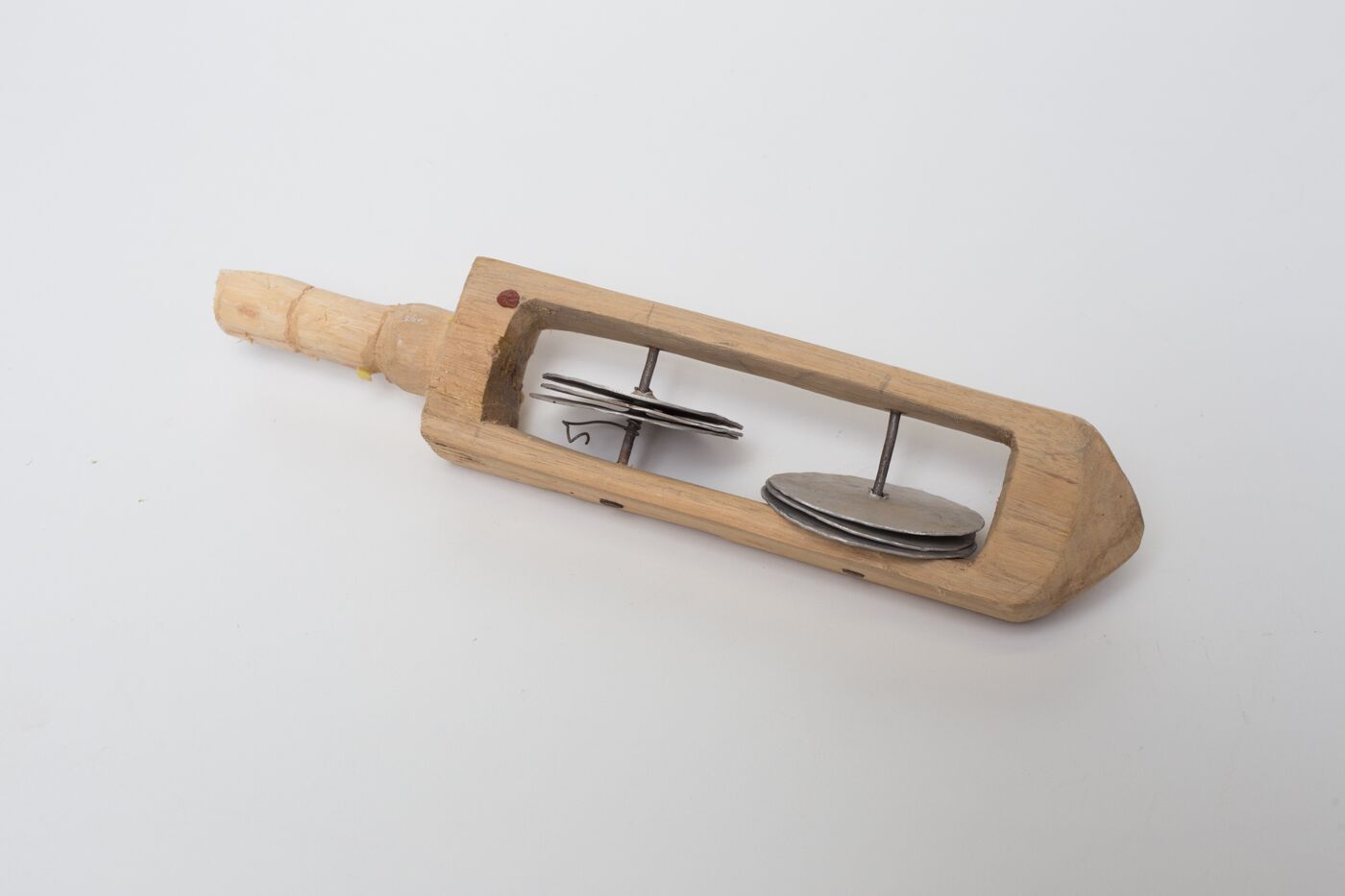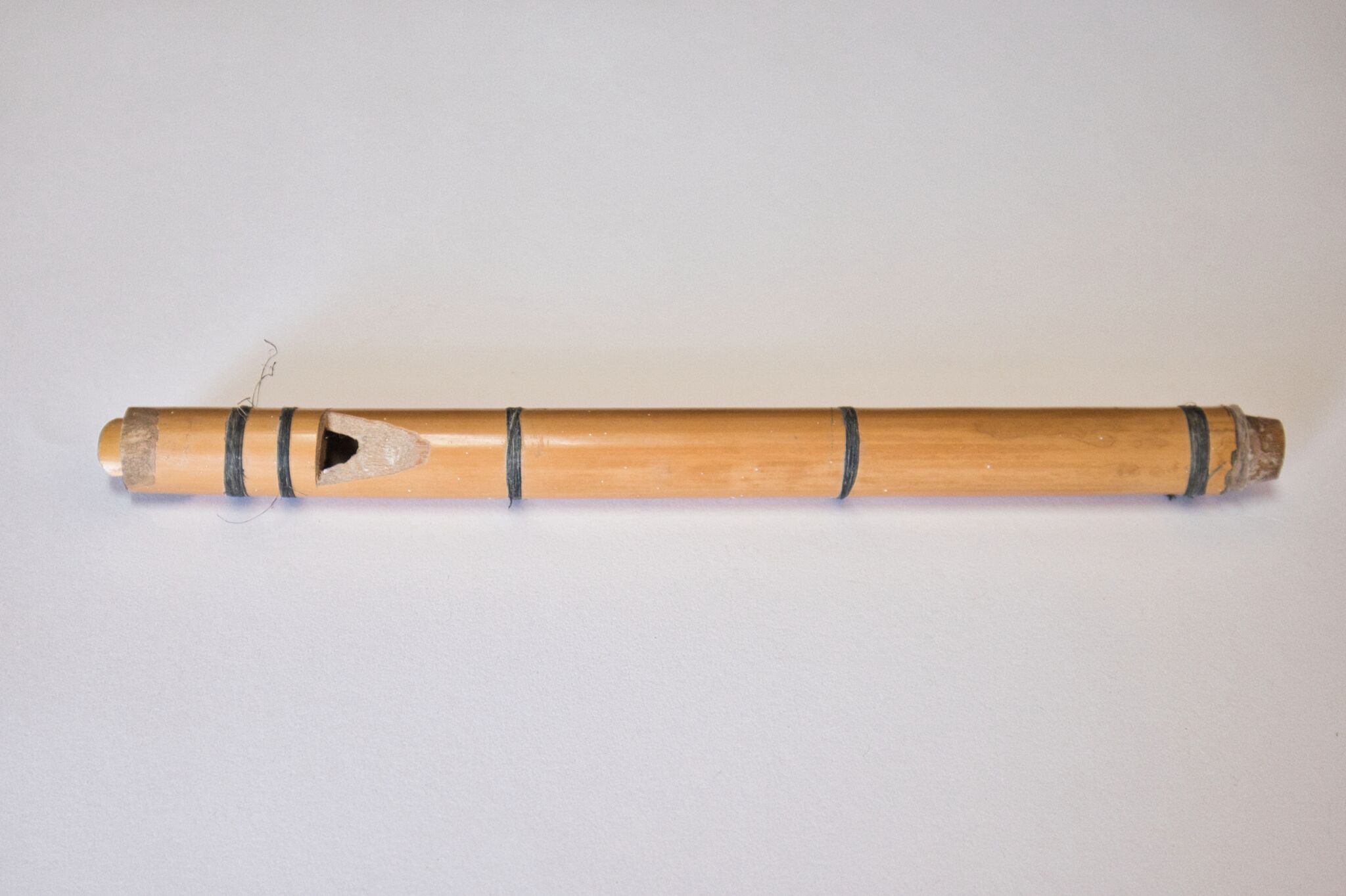-
 SenazoDownload
SenazoDownload
The senazo is a shaken idiophone instrument whose Yaqui name is Sena'aso. It is another of the rattles used by the Pascola in his dance with the Maso or Venado. The body of the instrument is made of a single piece of poplar wood, it consists of a rectangular frame that houses two sets of metal discs and a cylindrical handle. The senazo is executed with two movements: first shaking it in the air with the right hand and then smashing it against the palm of the left. With these movements the Pascola dancer produces a great variety of rhythms. The Pascola requires a great rhythmic sense and a lot of flexibility in the right wrist to play the senazo, making it dialogue with the drum and combining this action with the movements of the head and feet that the dance requires. The name of the instrument sena'aso may derive from the Spanish rattle, due to the fact that the Yaquis themselves usually also call it rattle, therefore, there is a possibility that its origin is Mediterranean and it has reached Mexico through the colonizers. Its symbolism by itself is difficult to discern, it is believed to be totally linked to that of Pascola's mask (Varela, 1986).
Metadata
Title
Pascola dancer hand rattle
Alternative title
Sena'aso
Creator
Yaqui tribe
Created
1985
Description
Original object (physical):
Dimensions: 7 X 24 X 5 cm.
Technique in wood and metal
Description
The senazo is a shaken idiophone instrument whose Yaqui name is Sena'aso. It is another of the rattles used by the Pascola in his dance with the Maso or Venado. The body of the instrument is made of a single piece of poplar wood, it consists of a rectangular frame that houses two sets of metal discs and a cylindrical handle.
The senazo is executed with two movements: first shaking it in the air with the right hand and then smashing it against the palm of the left. With these movements the Pascola dancer produces a great variety of rhythms. The Pascola requires a great rhythmic sense and a lot of flexibility in the right wrist to play the senazo, making it dialogue with the drum and combining this action with the movements of the head and feet that the dance requires.
The name of the instrument sena'aso may derive from the Spanish rattle, due to the fact that the Yaquis themselves usually also call it rattle, therefore, there is a possibility that its origin is Mediterranean and it has reached Mexico through the colonizers. Its symbolism by itself is difficult to discern, it is believed to be totally linked to that of Pascola's mask (Varela, 1986).
Format
Still image / jpg
Spatial
Sonora , Cócorit
Temporal
1981 -1990
Is part of
Music and dance room, Museum of the Yaqui people
Provenance
Museum of the Yaqui people. Sinaloa and Obregon No. 200, Cocorit, Cajeme, Sonora
It has been part of the museum's collection since its creation in 1985.
Language
eng , yaqui
Date
2021-12-14
Identifier
Web Catalogación Obregón 2016 - 2683
RS-OM-MEY-56
Relationship
Drum | Pascola Mask | Pascola Dancer Bells Belt | Flute | Pascola Drum | Moth Cocoon Ankle Rattles Pascola Length | Deer dancer | Pascola dancer | Pascola dancer video
References
Varela-Ruiz, Leticia T. (1986). La música en la vida de los yaquis . Sonora: Secretaría de Fomento Educativo y Cultura
Contributor
Sonoran Institute of Culture
Casanova, Juan (photography)
Buitimea Flores, Teodoro; Ruiz Félix, José María (investigation)
Valencia, Carlos ; The Yaqui Pride Project (translation to english)
License

This work is licensed under a Creative Commons Attribution-NonCommercial-ShareAlike 4.0 International License.
Rights
Sonoran Institute of Culture



